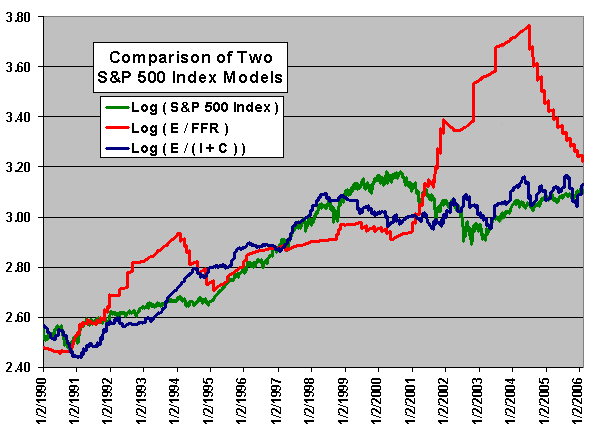In their April 2002 paper entitled “Solving the Price-Earnings Puzzle” Carl Chiarella and Shenhuai Gao investigate the interrelationships of stock prices (the S&P 500 index), earnings and interest rates (the Federal Funds Rate) during January 1979 to August 2001. They conclude that the stock index is proportional to aggregate earnings and inversely proportional to the interest rate. Using data for these variables since January 1990, we find that:
The following chart shows:
(1) Log ( S&P 500 index ), the log of the actual S&P 500 index.
(2) Log ( E / FFR ), the log of aggregate S&P 500 earnings (E) divided by the Federal Funds Rate (FFR). This plot is the model proposed in the above-referenced paper.
(3) Log ( E / ( I + C ) ), the log of aggregate S&P 500 earnings (E) divided by the sum of the inflation rate (I) and a constant (C), where C is the average difference between the S&P 500 index earnings yield and the inflation rate over the entire period. C represents the real return investors require from earnings.
Note that C is constant only for a given time period (in this case, the test interval). The model proposed in the paper (the red line) blows up in the early 2000s as the Federal Reserve implemented an extremely stimulative interest rate policy to combat recession (as also happened in 1992-1994). The plot for this model suggests that the stimulation is nearly removed at this point. In contrast, the alternative using inflation rather than FFR (the blue line) stays in touch with reality regardless of Federal Reserve policy.

In summary, investors/traders may pivot on earnings, but appear to react to the inflation rate rather than interest rates.